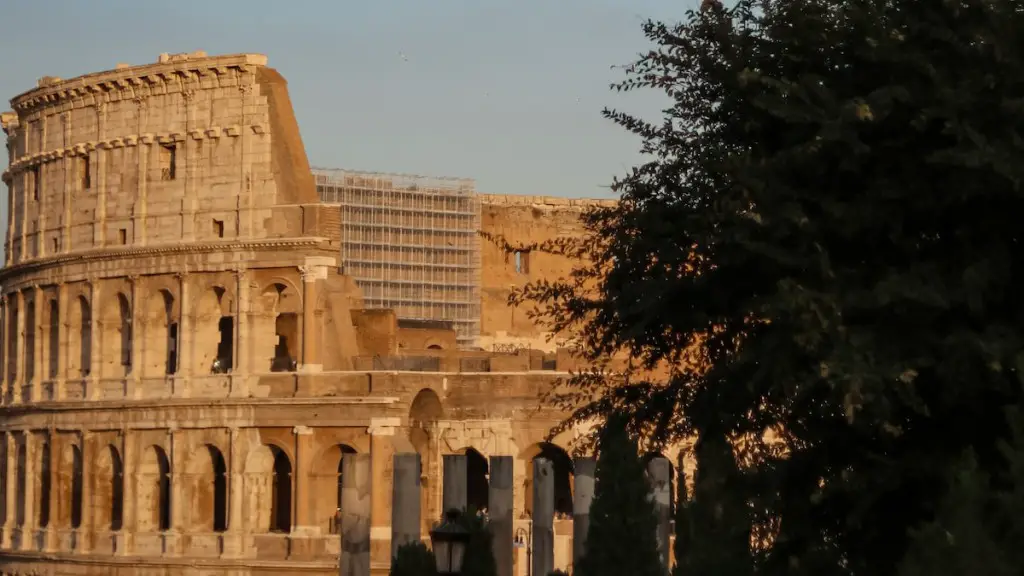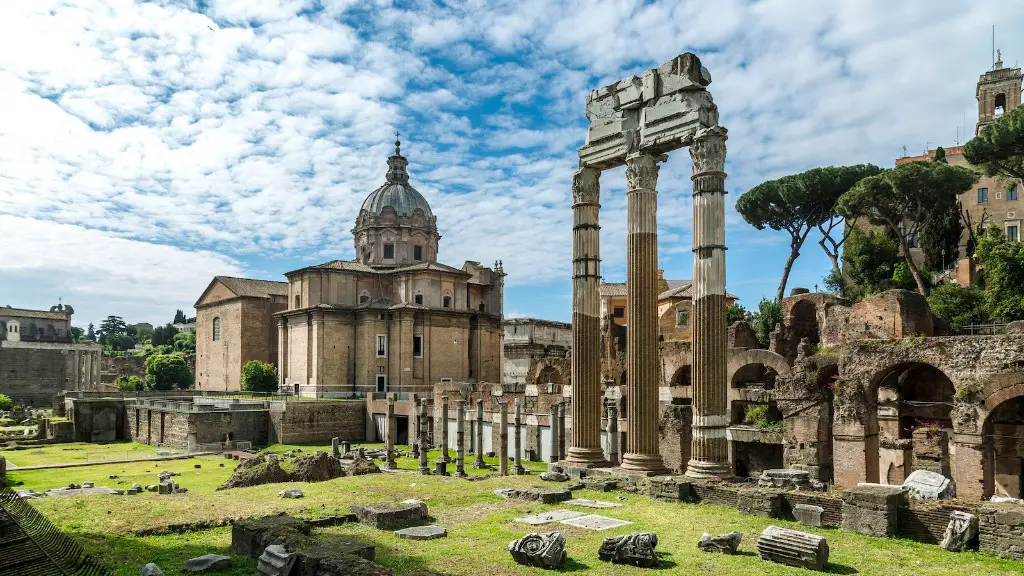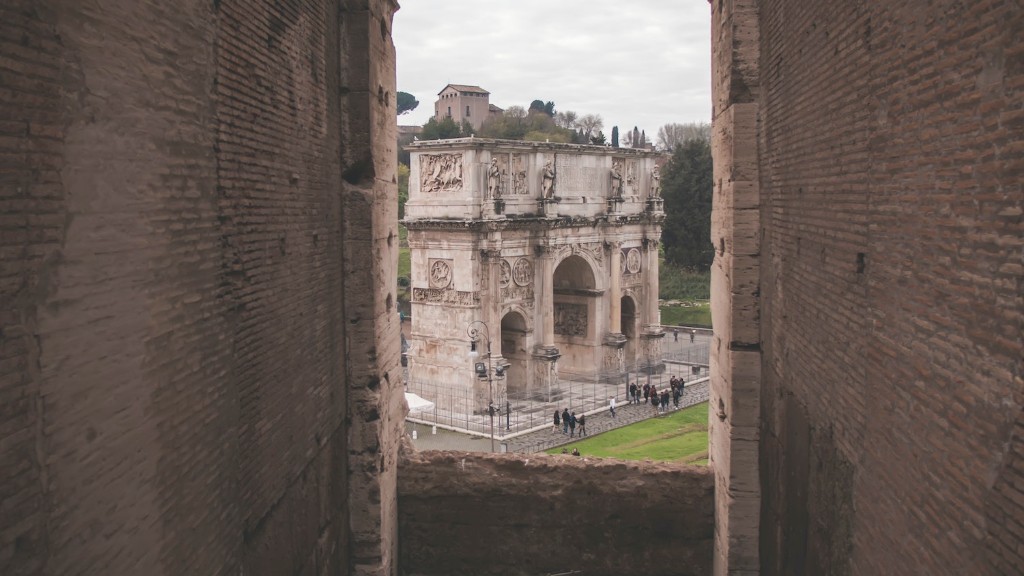Luxury Items
Ancient Rome was renowned as a major trading hub in the Mediterranean, exporting and importing goods and materials from all around the world. Much of Rome’s economy was based on trading, and the city had access to a huge variety of resources. Among the most significant things Rome traded were luxury items such as spices, diamonds, and even art.
Spices from Asia were particularly popular in Rome at the time. They were mostly used for medical purposes, flavoring food, and for cosmetics. Roman luxury, however, stretched past spices and were made available through the import of exotic items from Africa and the East. Fishermen guarding the Mediterranean were amongst the first to bring such items to Europe.
Diamonds, most notably, were exported from India as a symbol of wealth and power. Rome was immensely competitive when it came to trading these valuable stones, and merchants were keen to take advantage of the glittering gem. Particular patrons of the stones included Emperor Augustus, and the jewels were often imported to adorn rings, medallions, and other ornaments.
Rome was also known for trade in art. Many of the innovations that arose during the time period were developed and crafted by the skilled hands of artisans in Rome. Bronze sculptures were especially prized for their intricate detailing and were made for prominent public positions such as plazas and palaces. They were also used for decoration in wealthy homes and served as a staple of luxury inside the city walls.
Textiles
Along with luxury items, Ancient Rome traded a wide range of textiles, mostly to societies in the Mediterranean. Rome was known for its advanced weaving and dyeing technology, which enabled them to produce lavish fabrics and apparel. Many of the items found in the marketplace were imported from Egypt, Greece, and other regions of the world, giving the Roman citizens access to a wide range of materials.
Common items traded in the Roman marketplace included silk, cotton, and linen. Silk was imported in huge quantities from the east and was traded as a gift to street patrons and gods. Cotton and linen, on the other hand, were imported from Egypt, Persia, and India to be used as fabrics for clothing.
Rome also had a thriving leather industry. Native Romans were expert leather craftsmen and carried out a variety of techniques for tanning and preserving the hides of animals. Leather was a popular trade item and vendors could be found in the marketplaces of the city. Roman traders also exported leather goods to other Mediterranean cities, particularly to their competitors in Greece.
Food and Beverage
Most of the food traded in Ancient Rome came from local markets and farms. Fruits, vegetables, meats, and grains were readily available in the region and were traded using a bartering system. Rural farmers would often travel to the city to sell their goods and make a living.
An important contribution to Rome’s food trading industry was wine and olive oil. Olive trees had a long history with the city and were often seen as a symbol of wealth. Wine was also an important item, and was made by some of the most renowned vintners in Italy. Roman wines were popular in many parts of Europe and used in various events, including celebratory feasts and religious rituals.
In addition to these items, Rome was known to have a thriving fish industry. Some of the fish traded were caught off the coast of Italy and were often prepared with olive oil, herbs, and spices. Seafood was enjoyed by most of the citizens and culinary recipes were often passed from generation to generation.
Metals
Metals were one of the most important items traded in Ancient Rome. Much of the city’s wealth was tied to its metal resources, with copper, iron and later bronze being essential components of the Roman Empire’s powerful military forces. Copper and iron were mined in various parts of the Mediterranean, especially in Sicily.
The metal trade was so important that it was at times heavily regulated by the government. Mining operations were monitored constantly and metal was only to be used for Roman military needs. These regulations allowed Rome to maintain a monopoly on the metal trade, a key factor in their success in dominating the region.
Rome also extracted metals from its conquered territories. One of the most valuable metals mined in this way was the precious metal plutonium, which was found in great quantifies in southern Europe. Plutonium was used in the production of coins and was seen as one of the most important commodities of the era.
Marble and Stone
Marble and other forms of stone were also mainstay trade items in Ancient Rome. Many of Rome’s iconic architectures and monuments were carved from marble and other materials imported from around the world. Examples include the Pantheon and the Colosseum, both of which are key tourist attractions in their own right.
The marble trade was so lucrative in Rome that the city laid claim to many of the quarries in the region, allowing them to control the production of marble in the region. It is believed that the majority of Roman marble was extracted from the coastal Greek islands, with numerous ships and laborers working round the clock to provide the city with stone.
Rome also imported marble from other parts of the world. Some of the most notable sources were Egypt, India, and China. These pieces were highly sought after for their aesthetic value and were often used for sculptures and artifacts. The highest grade of marble was often used for bringing luster to the interiors of lavish homes.
Animal Skins
Animal skins were highly sought after in Ancient Rome and were used for a variety of purposes. Elk and deer skins from northern Europe were particularly prized and were often used to make clothing and accessories. They were also used as decoration in homes and palaces.
Leather was also widely traded in Rome, and tanning gatherings were held twice a year. Craftsmen and merchants flocked to such gatherings in order to acquire the various animal skins needed to craft their items. In addition to deer and elk, other animals such as bears and wolves were also traded for their fur.
The skins were often used for fur-lined items such as hats, muffs, and necklaces. They were also used as decorations for prestigious public places and as part of military uniforms. The finest quality of animal skin was reserved for wealthy patrons, though the prices of such items often varied depending on the quality.
Pottery and Ceramics
Arguably the most famous products that Ancient Rome traded were their pottery and ceramics. The city was renowned for being one of the most advanced ceramics centers in the world, and the quality of their work was hard to match. Many artifacts created during this time period are still around today and can be seen in museums and exhibitions.
Roman pottery was often used as a display of craftsmanship and artistry. It was decorated with intricate patterns, symbols, and pagan motifs from all corners of the empire. It was also used as a form of communication, with traders and craftsmen exchanging messages through designs and incised lettering.
Pottery was also an important trade item for Rome, and many merchants made a living off of buying and selling ceramic pieces. Items such as vases, bowls, and cups were among the most popular products exported from the city. Other than lacking in beautiful designs, Roman ceramic work was far in advance of other territories and attracted considerable interest from abroad.
Exotic Animals
Exotic animals and creatures were frequently imported to Rome during its time of power. Many of these animals had never before been seen in Europe and their presence in the city was an incredible spectacle. Animals such as elephants, lions, tigers, and bears all made their way to Roman marketplaces, and they were highly prized as pets and show animals.
The import of these creatures also boded well for Rome’s entertainment and commerce industries. Many of these animals were used in circuses and plays, giving the citizens of Rome a unique form of entertainment and amusement. Rome had a great love for exotic animals which was largely seen in the tales of fantastic creatures told in the stories of the mythical gods and goddesses.
Animals were also important for the Roman Empire’s military capability, with elephants, camels, and horses important for their speed, size, and power. Animal trading was such a lucrative business in Rome that some merchants even built animal parks, such as the one found near the Imperial Palace.
Wood and Plantation
Wood and wood-based products were also important for trade in Ancient Rome. A wide variety of wood types were imported from forests across the Mediterranean region, with cedar, pine, and maple being popular choices. The Romans had elaborate techniques for the import of wood, with various waterways used to transport the goods across the region.
Plants and herbs were also imported to Rome, allowing the city to gain access to the many benefits of medicinal herbs. These plants were often used as part of treatments and other forms of therapy, allowing the Roman Empire to tap into herbal remedies that had been passed down by regions like Ancient Egypt.
Wood and plants were also used by the Romans for decoration, with wooden mosaics and wooden furniture being especially popular. Plants were also used for decoration, and the city was often adorned with luscious green foliage that symbolized the power of the empire. Gardens and parks became popular and were a must-visit destination for travelers in the region.


